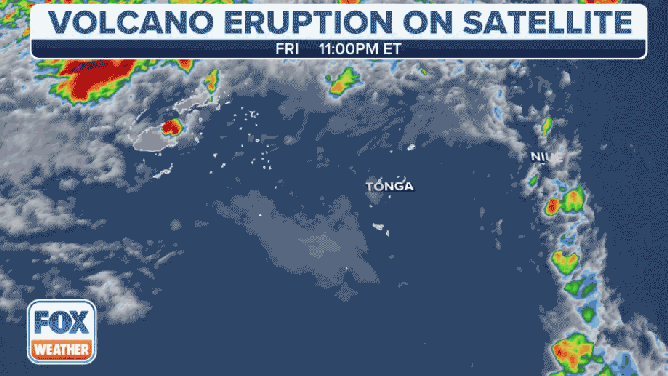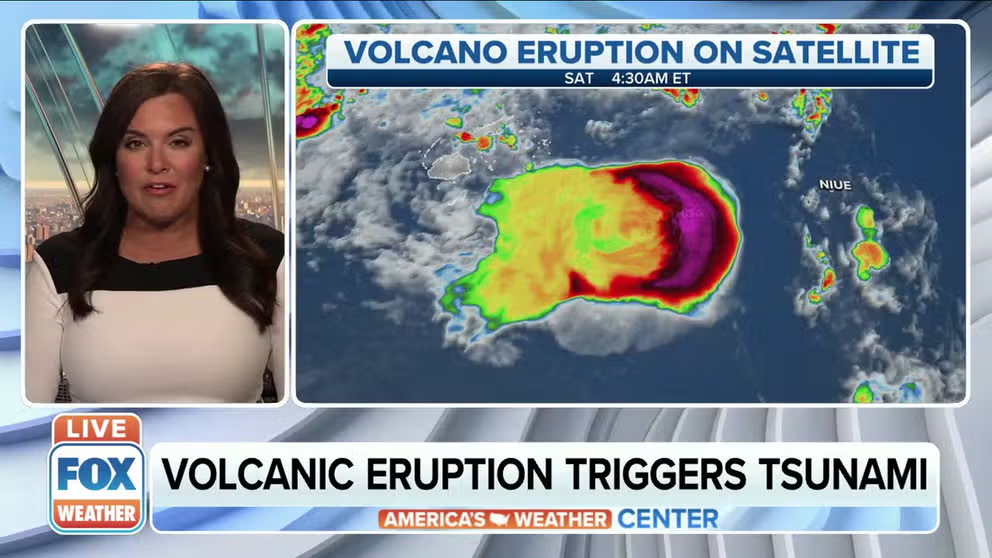WATCH: Shockwave from Tonga volcanic eruption crosses US nearly 6,000 miles away
Blast from the underwater volcano’s eruption was detected by barometers around the world.
Volcanic eruption triggers tsunami
Marty Ralph, Ph.D. at Scripps Institute of Oceanography talks to FOX Weather about the recent tsunami in the Pacific.
While the study of weather and the study of volcanoes are two different branches of science, they do intersect from time to time.
That became apparent over the weekend when an underwater volcano near the island of Tonga in the Pacific Ocean erupted. The blast late Friday night prompted tsunami warnings across the West Coast and Alaska, where increased wave heights were reported.
The explosion was caught on weather satellites that observed a plume of smoke and ash rise from the site of the eruption. The satellites also recorded the shockwave generated by the blast racing away from the volcano.

The Jan. 14, 2022, eruption of an underwater volcano near Tonga was captured on satellite.
(FOX Weather)
A shockwave is a rapid compression of air at the site of an explosion. That compression moves outward from the site in all directions. That shockwave can be detected by a device called a barometer, which measures atmospheric pressure. As the compression wave moves across a barometer, quick changes in pressure are detected. These are called pressure perturbations.
Daryl Herzmann, of the Iowa Environmental Mesonet, used pressure readings across the U.S. to show how the shockwave from the Tongan volcano traversed the country – first, from the west and then from the east.
The National Weather Service in Houston, about 6,300 miles away from Tonga, posted a tweet showing the detection of the pressure wave early Saturday morning.
The wave was also detected by barometers around the world as it circled the globe. Here are the observations at a weather station in the United Kingdom.
